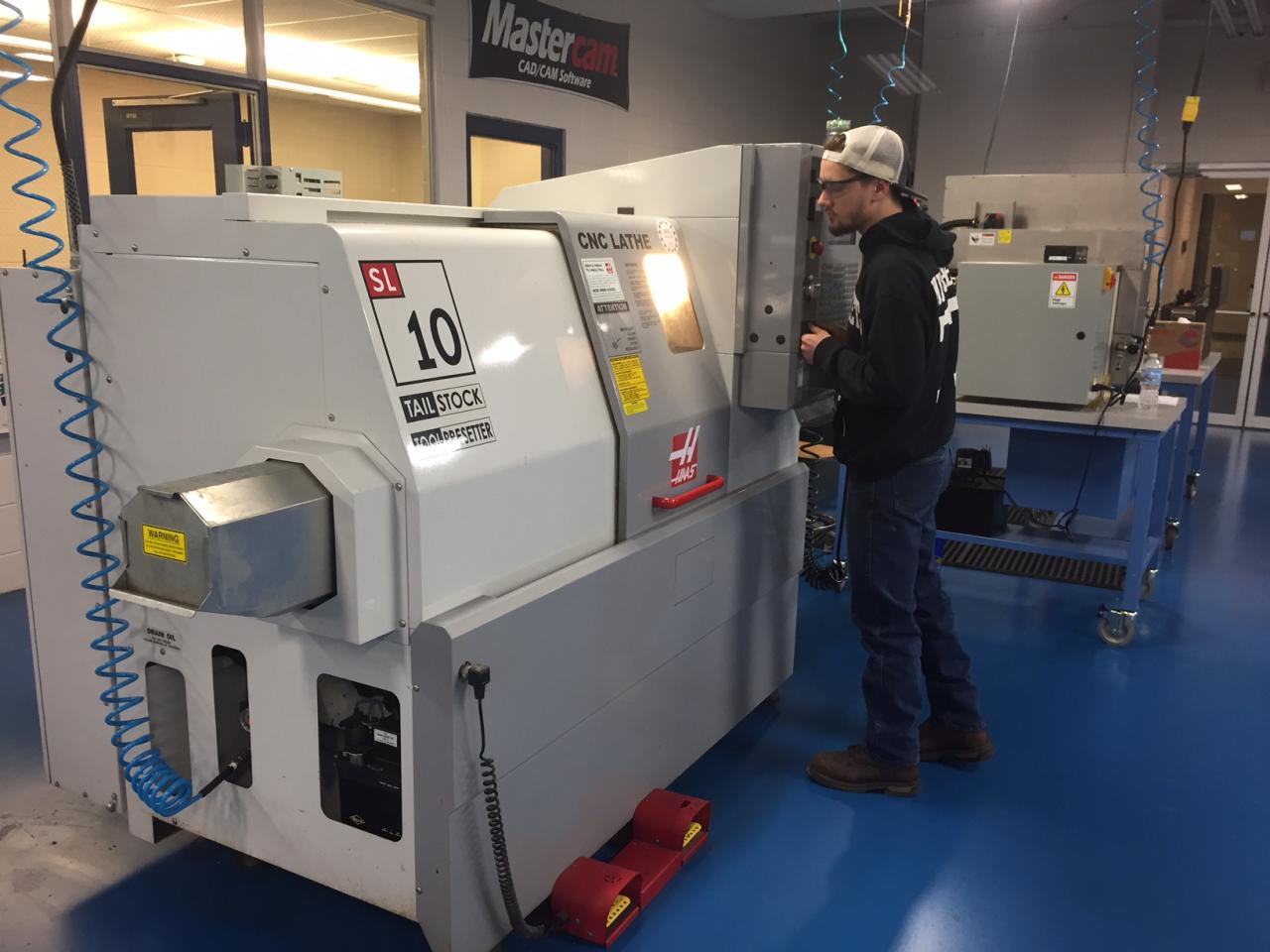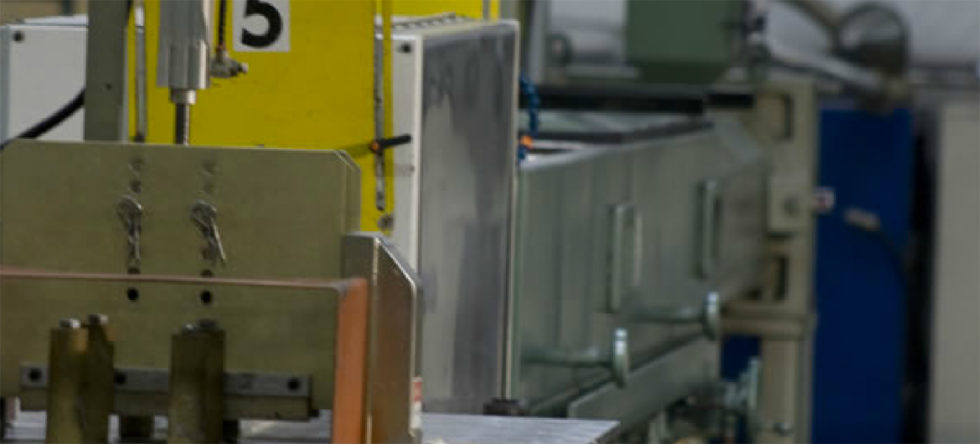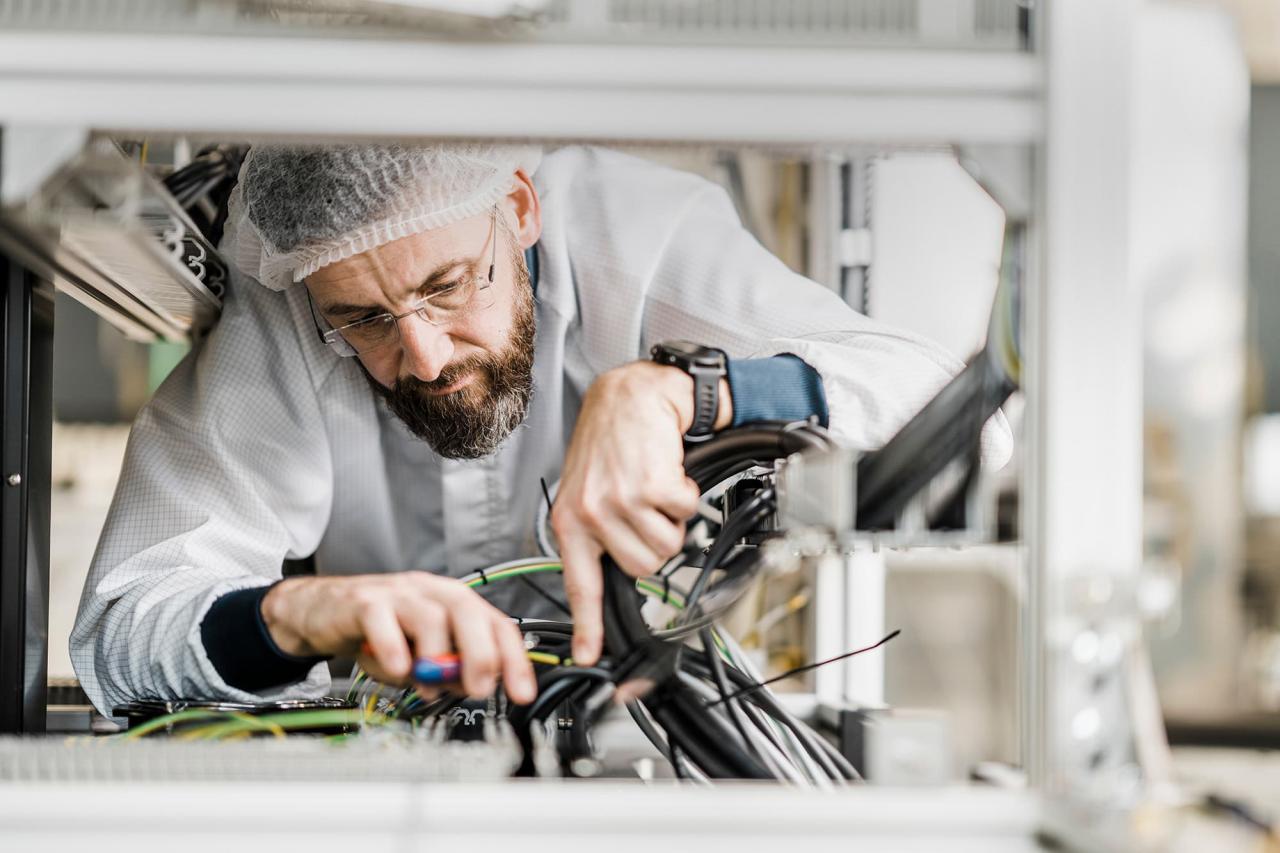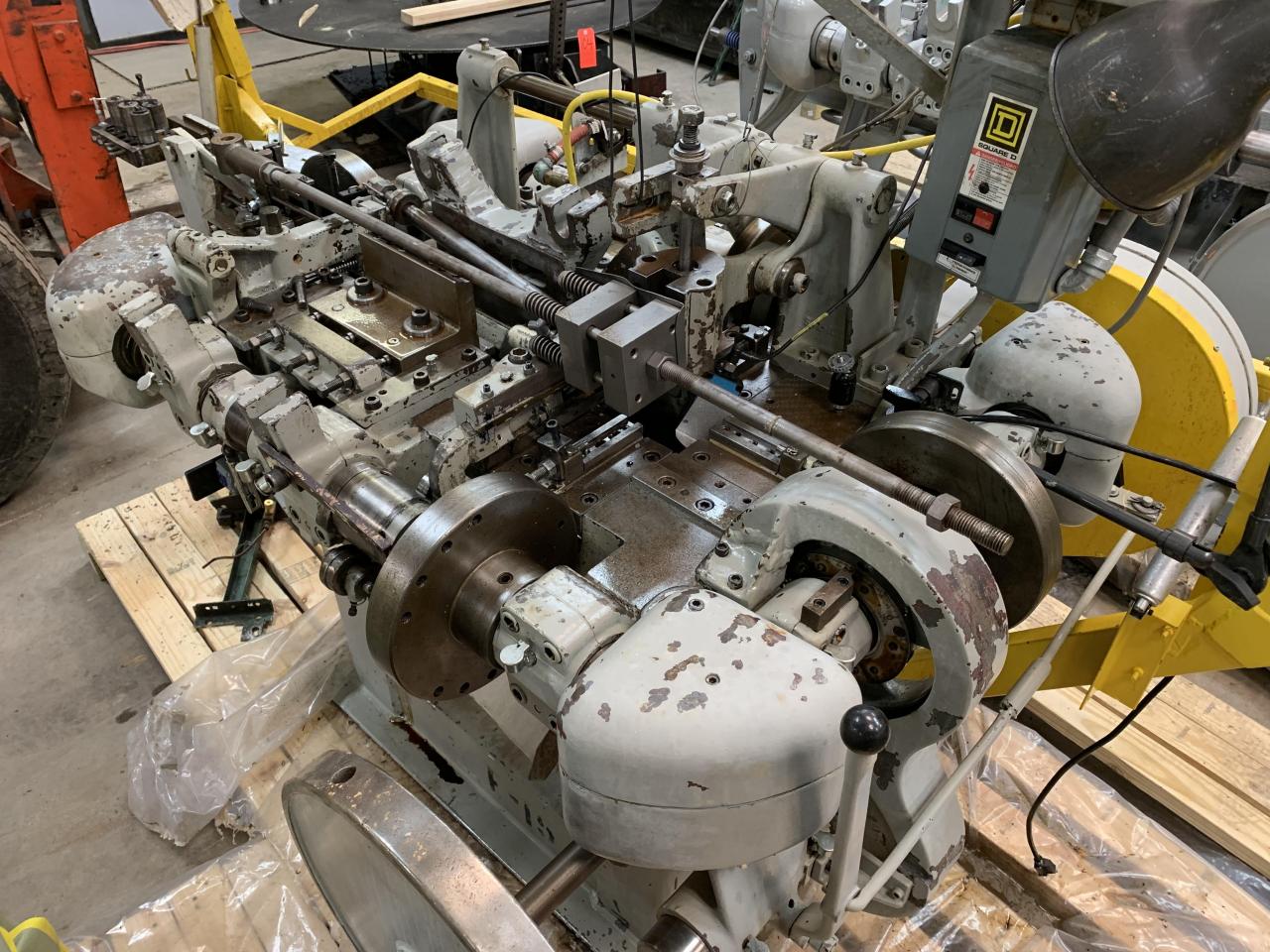SPC Technology: A Guide to Precision and Control
SPC technology, short for Statistical Process Control, has revolutionized manufacturing and automation by introducing a data-driven approach to quality assurance. This technology utilizes statistical methods to monitor and analyze production […]

SPC technology, short for Statistical Process Control, has revolutionized manufacturing and automation by introducing a data-driven approach to quality assurance. This technology utilizes statistical methods to monitor and analyze production processes, identifying deviations from desired outcomes and enabling corrective actions to maintain consistency and efficiency.
SPC technology has a rich history, evolving from early quality control methods to sophisticated systems incorporating sensors, actuators, and advanced software. It’s now a vital tool in various industries, including automotive, pharmaceuticals, and electronics, where precision and consistency are paramount.
Applications of SPC Technology
Statistical Process Control (SPC) technology is a powerful tool for improving the quality and efficiency of processes in various industries. It helps organizations identify and eliminate sources of variation, leading to better products, reduced costs, and increased customer satisfaction.
Manufacturing
SPC technology is widely used in the manufacturing industry to monitor and control the quality of products.
- Process Control: SPC charts are used to track key process variables, such as dimensions, weight, or chemical composition, over time. This allows manufacturers to identify trends and deviations from target values, enabling timely adjustments to prevent defects and maintain consistent quality. For example, in a car manufacturing plant, SPC charts can monitor the thickness of car paint to ensure it meets quality standards.
- Quality Improvement: SPC data can be analyzed to identify root causes of variation and implement corrective actions. This can lead to significant improvements in product quality and reduction in scrap and rework rates. For example, a manufacturer of electronic components used SPC to identify the cause of a high failure rate in their products. By analyzing the data, they discovered that the problem was due to a faulty batch of raw materials. After replacing the faulty materials, the failure rate dropped significantly.
- Process Optimization: SPC can be used to optimize process parameters, such as temperature, pressure, or flow rate, to improve efficiency and reduce costs. For example, a chemical manufacturing company used SPC to optimize the reaction time in their production process, resulting in increased output and reduced energy consumption.
Healthcare, Spc technology
SPC technology has applications in healthcare, particularly in improving patient safety and efficiency.
- Patient Safety: SPC charts can be used to monitor critical patient care processes, such as medication administration, blood transfusion, and surgical procedures. This helps identify potential risks and implement preventive measures to ensure patient safety. For instance, a hospital used SPC to track the number of medication errors occurring on a specific ward. By analyzing the data, they identified a pattern of errors related to a particular type of medication. They then implemented a new system for administering this medication, which significantly reduced the number of errors.
- Process Improvement: SPC can be used to optimize healthcare processes, such as appointment scheduling, laboratory testing, and discharge planning. This can improve efficiency and reduce wait times for patients. For example, a clinic used SPC to analyze the time it took to process patient referrals. By identifying bottlenecks in the process, they implemented changes that reduced the average referral processing time by 20%.
Service Industry
SPC technology can be applied in the service industry to improve customer satisfaction and operational efficiency.
- Customer Service: SPC charts can be used to track key customer service metrics, such as response time, resolution rate, and customer satisfaction scores. This allows service providers to identify areas for improvement and enhance the customer experience. For example, a call center used SPC to monitor the average hold time for customers calling their support line. By analyzing the data, they identified a pattern of long hold times during peak hours. They then implemented a strategy to increase staffing levels during peak periods, which significantly reduced hold times and improved customer satisfaction.
- Process Efficiency: SPC can be used to optimize service processes, such as order fulfillment, billing, and complaint handling. This can improve efficiency and reduce costs. For example, a retail company used SPC to analyze the time it took to process online orders. By identifying bottlenecks in the process, they implemented changes that reduced the average order processing time by 15%.
SPC Technology Components
Statistical Process Control (SPC) technology relies on a collection of interconnected components to monitor, analyze, and control manufacturing processes. Each component plays a vital role in ensuring the effectiveness and efficiency of the SPC system.
Sensors
Sensors are the primary interface between the SPC system and the manufacturing process. They continuously collect data on various process parameters, such as temperature, pressure, flow rate, and dimensional measurements. This data is then transmitted to the controller for analysis and decision-making.
- Types of Sensors: Sensors used in SPC systems vary depending on the specific process parameters being monitored. Common types include temperature sensors (thermocouples, RTDs), pressure sensors (strain gauges, piezoelectric sensors), flow sensors (rotameters, ultrasonic sensors), and dimensional sensors (laser scanners, vision systems).
- Sensor Accuracy and Precision: The accuracy and precision of sensors are crucial for the reliability of the SPC system. Sensors should be calibrated regularly to ensure their readings are accurate and consistent over time.
Actuators
Actuators are responsible for making adjustments to the manufacturing process based on the data analyzed by the controller. They receive signals from the controller and translate them into physical actions, such as adjusting valve openings, changing motor speeds, or modifying machine settings.
- Types of Actuators: Actuators used in SPC systems can be pneumatic, hydraulic, or electric, depending on the specific application. Examples include solenoid valves, servo motors, and pneumatic cylinders.
- Actuator Response Time: The response time of actuators is critical for effective process control. Actuators should be able to respond quickly and accurately to changes in process parameters to minimize deviations from the target values.
Controllers
Controllers are the brain of the SPC system, responsible for analyzing data from sensors, making decisions based on pre-defined control rules, and sending commands to actuators. Controllers use algorithms and statistical models to identify process variations and implement corrective actions.
- Control Algorithms: SPC controllers utilize various control algorithms, such as PID (Proportional-Integral-Derivative) control, to maintain process stability and minimize deviations from the target values. These algorithms adjust the actuator settings based on the error between the actual process parameter and the desired setpoint.
- Data Analysis and Decision-Making: Controllers use statistical methods to analyze the data collected from sensors, identify trends, and detect out-of-control conditions. Based on this analysis, they make decisions about when and how to adjust the process using actuators.
Software
SPC software provides the user interface for configuring, monitoring, and analyzing the SPC system. It enables users to define control limits, analyze process data, generate reports, and identify potential problems.
- Data Acquisition and Storage: SPC software acquires data from sensors and stores it in a database for analysis and reporting. It allows users to visualize process data in real-time and over time, providing insights into process behavior.
- Statistical Analysis and Reporting: SPC software provides tools for performing statistical analysis on process data, including control charts, histograms, and capability analysis. It generates reports that help users understand process performance and identify areas for improvement.
Schematic Diagram
The following schematic diagram illustrates the interconnection and interaction of the components in an SPC system:
[Diagram description: The diagram depicts a closed-loop control system. Sensors are connected to the controller, which receives process data. The controller analyzes the data and sends control signals to actuators, which adjust the process parameters. The system operates in a continuous feedback loop, with sensors constantly monitoring the process and providing data to the controller.]
Advantages and Limitations of SPC Technology
SPC technology, when implemented effectively, can bring numerous benefits to organizations. However, like any technology, it also has its limitations. Understanding both the advantages and disadvantages of SPC technology is crucial for making informed decisions about its adoption.
Advantages of SPC Technology
The advantages of SPC technology are numerous and can significantly impact an organization’s overall performance.
- Improved Efficiency: SPC technology streamlines processes by automating tasks and reducing manual intervention. This can lead to faster turnaround times, increased productivity, and reduced operational costs. For example, automated data collection and analysis can free up employees to focus on more strategic tasks.
- Enhanced Accuracy: SPC technology utilizes sensors and data analysis to provide precise and objective measurements. This reduces human error and improves the accuracy of data, leading to more reliable decision-making.
- Improved Quality: SPC technology helps identify and eliminate variations in processes, leading to consistent and high-quality products or services. This can enhance customer satisfaction and reduce the need for rework or recalls.
- Predictive Maintenance: SPC technology can monitor equipment performance and predict potential failures, allowing for proactive maintenance and minimizing downtime. This can save costs associated with unexpected repairs and disruptions.
- Data-Driven Decision Making: SPC technology provides a wealth of data that can be used to analyze trends, identify root causes of problems, and make informed decisions. This data-driven approach can lead to more effective strategies and continuous improvement.
Limitations of SPC Technology
While SPC technology offers numerous advantages, it’s essential to acknowledge its potential limitations:
- Cost: Implementing SPC technology can be expensive, involving the purchase of hardware, software, and training for personnel. This can be a significant barrier for smaller organizations or those with limited budgets.
- Complexity: SPC technology can be complex to implement and maintain, requiring specialized knowledge and expertise. This can pose a challenge for organizations lacking the necessary skills or resources.
- Potential for Failure: SPC technology relies on sensors and data analysis, which can be prone to errors or malfunctions. This can lead to inaccurate data and unreliable results, impacting decision-making.
- Resistance to Change: Implementing SPC technology can require significant changes to existing processes and workflows, which can face resistance from employees who are accustomed to traditional methods. Overcoming this resistance is crucial for successful adoption.
- Data Security: SPC technology involves collecting and storing large amounts of data, raising concerns about data security and privacy. Organizations need to implement robust security measures to protect sensitive information.
Future Trends in SPC Technology
The field of SPC technology is rapidly evolving, driven by advancements in artificial intelligence, machine learning, and data analytics. These innovations are poised to revolutionize the way SPC is implemented and utilized across various industries. This section delves into the future trends in SPC technology, exploring potential applications and their impact on manufacturing and automation.
Integration with Artificial Intelligence and Machine Learning
The integration of AI and ML into SPC systems will significantly enhance their capabilities. AI algorithms can analyze vast amounts of data, identify patterns, and predict potential issues before they occur. This proactive approach allows for timely intervention and prevents costly downtime. For instance, AI-powered SPC systems can monitor real-time data from production lines, detect subtle variations in product quality, and predict potential defects based on historical data. This enables manufacturers to adjust production parameters proactively and maintain consistent quality.
Real-Time Data Analysis and Predictive Maintenance
Real-time data analysis is another crucial aspect of future SPC technology. With the advent of the Internet of Things (IoT), sensors can continuously collect data from machines and processes, providing a constant stream of information. This data can be analyzed in real-time to identify anomalies and predict potential failures. Predictive maintenance leverages this real-time data to schedule maintenance activities before equipment malfunctions, minimizing downtime and optimizing production efficiency. For example, a manufacturer can monitor the vibration levels of a machine in real-time. If the vibration levels exceed a predefined threshold, the system can trigger an alert, indicating potential failure. This allows for timely maintenance and prevents costly downtime.
Advanced Analytics and Data Visualization
Advanced analytics and data visualization tools are becoming increasingly important in SPC. These tools enable manufacturers to extract valuable insights from data and make informed decisions. For example, advanced analytics can be used to identify root causes of quality issues, optimize process parameters, and improve overall efficiency. Data visualization tools provide a clear and intuitive representation of data, making it easier for operators and managers to understand trends and patterns. This enhanced understanding allows for more effective decision-making and continuous improvement efforts.
Cloud-Based SPC Solutions
Cloud-based SPC solutions offer numerous advantages, including scalability, accessibility, and cost-effectiveness. By hosting SPC software in the cloud, manufacturers can access data and analytics from anywhere, anytime. Cloud-based solutions also eliminate the need for expensive hardware and software infrastructure, making them more affordable for businesses of all sizes. Furthermore, cloud-based solutions are highly scalable, allowing manufacturers to adjust their SPC capabilities as their needs evolve.
Integration with Digital Twins
Digital twins are virtual representations of physical assets, enabling manufacturers to simulate and analyze different scenarios. Integrating SPC technology with digital twins can enhance process optimization and quality control. For example, a manufacturer can create a digital twin of a production line and use SPC data to simulate different production scenarios. This allows for identifying potential bottlenecks, optimizing process parameters, and improving overall efficiency.
Case Studies and Examples
Real-world applications of SPC technology demonstrate its effectiveness in various industries. These case studies highlight the benefits, challenges, and outcomes of implementing SPC principles and tools.
Illustrative Case Studies
Here are a few examples of how SPC has been successfully implemented across different industries:
| Case Study Name | Industry | Application | Outcome |
|---|---|---|---|
| Toyota Production System | Automotive Manufacturing | Process Control and Improvement | Reduced defects, improved quality, increased efficiency, and lower production costs. |
| Six Sigma Implementation at GE | Aerospace and Aviation | Process Optimization and Defect Reduction | Significant improvement in product quality, reduced customer complaints, and increased profitability. |
| SPC in Pharmaceutical Manufacturing | Pharmaceuticals | Quality Assurance and Batch Control | Enhanced product consistency, reduced variability, and compliance with regulatory standards. |
| SPC in Semiconductor Manufacturing | Electronics | Yield Improvement and Defect Prevention | Increased chip yield, reduced production downtime, and improved product reliability. |
Detailed Case Study Descriptions
Toyota Production System
The Toyota Production System (TPS) is a renowned example of successful SPC implementation. Toyota, a leading automotive manufacturer, has adopted SPC principles to achieve world-class quality and efficiency. TPS emphasizes continuous improvement, waste reduction, and process control.
- Challenge: In the early days, Toyota faced challenges with inconsistent product quality and high production costs.
- Solution: Toyota implemented SPC techniques, including control charts, process capability analysis, and statistical process control. These tools helped identify process variations, pinpoint root causes of defects, and implement corrective actions.
- Result: Toyota achieved significant improvements in product quality, reduced defects, and increased efficiency. This success led to the widespread adoption of TPS principles in various industries.
Six Sigma Implementation at GE
General Electric (GE) implemented Six Sigma, a methodology based on SPC principles, to enhance its operational efficiency and product quality. Six Sigma aims to reduce defects to near zero by identifying and eliminating process variations.
- Challenge: GE faced challenges with high defect rates, customer dissatisfaction, and operational inefficiencies.
- Solution: GE adopted Six Sigma principles and tools, including statistical analysis, process mapping, and root cause analysis. These techniques helped identify and eliminate the root causes of defects, leading to process improvements.
- Result: GE achieved significant reductions in defect rates, improved customer satisfaction, and increased profitability. The success of Six Sigma at GE inspired its adoption by many other companies.
SPC in Pharmaceutical Manufacturing
Pharmaceutical manufacturing requires strict quality control and compliance with regulatory standards. SPC plays a crucial role in ensuring product consistency and safety.
- Challenge: Maintaining consistent product quality and complying with stringent regulatory requirements are critical challenges in pharmaceutical manufacturing.
- Solution: Pharmaceutical companies implement SPC techniques to monitor and control critical process parameters. Control charts, process capability analysis, and statistical sampling are used to ensure batch-to-batch consistency and product quality.
- Result: SPC implementation in pharmaceutical manufacturing has resulted in enhanced product consistency, reduced variability, and compliance with regulatory standards. This contributes to improved patient safety and product efficacy.
SPC in Semiconductor Manufacturing
Semiconductor manufacturing involves complex processes with high precision and tight tolerances. SPC is essential for improving yield, reducing defects, and enhancing product reliability.
- Challenge: Semiconductor manufacturing faces challenges with high defect rates, low yields, and production downtime.
- Solution: Semiconductor manufacturers utilize SPC techniques to monitor and control critical process parameters, such as wafer temperature, etch depth, and deposition thickness. Control charts and statistical process control are used to identify and eliminate process variations.
- Result: SPC implementation in semiconductor manufacturing has resulted in increased chip yield, reduced production downtime, and improved product reliability. This leads to higher profitability and improved competitiveness in the industry.
Industry Standards and Regulations
The implementation and adoption of SPC technology are significantly influenced by a set of industry standards and regulations. These standards and regulations play a crucial role in ensuring the safety, reliability, and interoperability of SPC systems.
The establishment of these standards is a collaborative effort involving various organizations, each contributing to specific aspects of SPC technology.
Key Organizations Setting Standards
- International Organization for Standardization (ISO): ISO develops and publishes international standards for a wide range of industries, including SPC. ISO standards provide a framework for ensuring the quality, safety, and interoperability of SPC systems. Some key ISO standards related to SPC technology include:
- ISO 14001:2015: This standard specifies requirements for an environmental management system that an organization can use to enhance its environmental performance.
- ISO 9001:2015: This standard Artikels requirements for a quality management system that can be used by any organization, regardless of its size, type, or product. This standard ensures that organizations can consistently provide products and services that meet customer and regulatory requirements.
- ISO 27001:2013: This standard provides requirements for establishing, implementing, maintaining, and continually improving a documentation information security management system (ISMS). This standard ensures the confidentiality, integrity, and availability of information.
- American Society for Testing and Materials (ASTM): ASTM develops and publishes technical standards for a wide range of materials, products, systems, and services. ASTM standards related to SPC technology focus on testing methods, performance requirements, and safety guidelines. Examples include:
- ASTM F2789 – 14: Standard Specification for Flexible Printed Circuits for Wearable Electronic Devices: This standard provides specifications for flexible printed circuits that are used in wearable electronic devices. These circuits are designed to be flexible and durable, making them suitable for use in a variety of applications.
- ASTM F3089 – 16: Standard Specification for Printed Circuit Boards for Wearable Electronic Devices: This standard provides specifications for printed circuit boards that are used in wearable electronic devices. These boards are designed to be lightweight and durable, making them suitable for use in a variety of applications.
- Institute of Electrical and Electronics Engineers (IEEE): IEEE is a professional organization that develops standards for a wide range of technologies, including SPC. IEEE standards related to SPC technology focus on communication protocols, data formats, and interoperability. Some notable IEEE standards related to SPC technology include:
- IEEE 802.11: This standard defines the specifications for wireless local area networks (WLANs), commonly known as Wi-Fi. The standard is used for communication between wireless devices and networks, including SPC devices. This ensures compatibility and interoperability between different devices and networks.
- IEEE 802.15.4: This standard defines the specifications for low-power, low-rate wireless personal area networks (WPANs). The standard is used for communication between devices within a small area, such as smart home devices, wearable devices, and SPC systems. It promotes interoperability and enables the use of SPC devices in various applications.
- National Institute of Standards and Technology (NIST): NIST develops and publishes standards and guidelines for various technologies, including SPC. NIST standards related to SPC technology focus on security, privacy, and interoperability. Some relevant NIST standards include:
- NIST Cybersecurity Framework (CSF): This framework provides a set of guidelines and best practices for organizations to manage and reduce their cybersecurity risks. This framework is relevant to SPC technology, as it helps ensure the security and privacy of data collected and transmitted by SPC systems.
- NIST Special Publication 800-53: This publication provides a set of security controls that organizations can use to protect their information systems. The controls are relevant to SPC technology, as they help ensure the confidentiality, integrity, and availability of data collected and transmitted by SPC systems.
- UL (Underwriters Laboratories): UL is a global safety science company that provides certification and testing services for a wide range of products and technologies. UL standards related to SPC technology focus on safety, performance, and reliability. Some relevant UL standards include:
- UL 60950-1: This standard Artikels safety requirements for information technology equipment, including SPC systems. It ensures the safety of SPC devices and their users by setting standards for electrical safety, mechanical safety, and fire safety.
- UL 2054: This standard Artikels safety requirements for wearable electronic devices, including SPC systems. It ensures the safety of SPC devices and their users by setting standards for electrical safety, mechanical safety, and fire safety.
Impact of Standards and Regulations
Industry standards and regulations play a significant role in shaping the development and adoption of SPC technology. They help ensure the safety, reliability, and interoperability of SPC systems, which are essential for building trust and confidence in the technology.
- Increased Safety and Reliability: Standards and regulations set clear requirements for the design, manufacturing, and testing of SPC systems, ensuring their safety and reliability. This is crucial for applications where SPC technology is used in critical infrastructure or medical devices, where failures could have serious consequences.
- Enhanced Interoperability: Standards promote interoperability between different SPC systems, allowing them to communicate and exchange data seamlessly. This is essential for creating a robust and scalable ecosystem for SPC technology, where different devices and systems can work together efficiently.
- Increased Adoption: Clear standards and regulations provide a framework for the development and deployment of SPC technology, making it easier for businesses and organizations to adopt it. This is particularly important for industries where safety and reliability are paramount, as these standards provide assurance that SPC systems meet the required criteria.
- Reduced Costs: Standards and regulations can help reduce the cost of developing and deploying SPC technology by promoting the use of common components, protocols, and testing methods. This standardization can lead to economies of scale, reducing the overall cost of implementing SPC solutions.
Ethical Considerations of SPC Technology

The use of SPC technology raises several ethical considerations that need careful consideration. As SPC technology continues to evolve, it’s essential to understand its potential impact on various aspects of our lives, particularly in terms of employment and safety.
Potential Impacts on Employment
The widespread adoption of SPC technology can significantly impact employment patterns. While it may create new opportunities in areas like technology development and maintenance, it could also lead to job displacement in sectors where automation is readily implemented. For instance, SPC technology could automate tasks currently performed by human workers, potentially leading to job losses in manufacturing, transportation, and customer service.
- Job displacement: SPC technology’s automation capabilities can replace human workers in various tasks, potentially leading to job losses in industries such as manufacturing, logistics, and customer service.
- New job creation: However, the development and implementation of SPC technology can also create new jobs in areas like technology development, engineering, and data analysis.
- Reskilling and upskilling: To mitigate the negative impacts of job displacement, governments and organizations need to invest in reskilling and upskilling programs to prepare workers for the evolving job market.
Safety Concerns
The use of SPC technology also raises concerns about safety. As SPC systems become more complex and autonomous, there is a risk of unintended consequences or failures that could lead to accidents or injuries. For example, malfunctioning SPC systems in autonomous vehicles could result in traffic accidents, while errors in medical SPC systems could lead to misdiagnosis or treatment.
- Malfunction and failures: Complex SPC systems are susceptible to malfunction and failures, which could lead to accidents or injuries. For example, errors in autonomous vehicles or medical SPC systems could have serious consequences.
- Data security and privacy: SPC systems often collect and process large amounts of data, raising concerns about data security and privacy. Unauthorized access to this data could lead to misuse or exploitation.
- Bias and discrimination: SPC systems can be biased if they are trained on data that reflects existing societal biases. This can lead to discriminatory outcomes, particularly in areas like hiring, loan approval, and criminal justice.
Responsible Development and Deployment of SPC Technology
Responsible development and deployment of SPC technology are crucial to mitigating potential ethical risks. This involves considering the potential consequences of the technology and taking steps to ensure that it is used in a safe, fair, and ethical manner.
- Transparency and accountability: Developers and users of SPC technology should be transparent about its capabilities and limitations. There should also be clear mechanisms for accountability in case of accidents or misuse.
- Ethical guidelines and regulations: Establishing ethical guidelines and regulations for the development and deployment of SPC technology can help ensure that it is used responsibly.
- Public engagement and education: Engaging the public in discussions about the ethical implications of SPC technology and educating them about its potential benefits and risks can foster informed decision-making.
Summary
As SPC technology continues to evolve, its impact on the future of manufacturing and automation is undeniable. By embracing the principles of data analysis and continuous improvement, SPC technology empowers businesses to optimize their processes, reduce waste, and enhance product quality. The future holds exciting possibilities for SPC technology, with innovations like artificial intelligence and machine learning poised to further enhance its capabilities and expand its applications.
SPC technology, short for “Sound Pressure Control,” is a revolutionary approach to sound reproduction. It’s all about delivering a truly immersive and impactful audio experience, and systems like the definitive technology procinema 6d showcase this technology beautifully. This system is specifically designed to create a theater-like experience within your own home, allowing you to enjoy your favorite movies and music with unparalleled clarity and depth.
With SPC technology, you’ll be able to hear every subtle nuance of your favorite soundtracks, from the delicate whispers to the thunderous explosions.










